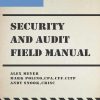Communication Sciences and Disorders From Science to Clinical Practice 4th edition by Ronald Gillam, Thomas Marquardt ISBN 1284203247 9781284203240
$70.00 Original price was: $70.00.$35.00Current price is: $35.00.
Instant download Communication Sciences and Disorders From Science to Clinical Practice 4th Ronald B. Gillam after payment
Communication Sciences and Disorders From Science to Clinical Practice 4th edition by Ronald Gillam, Thomas Marquardt – Ebook PDF Instant Download/Delivery: 1284203247 , 9781284203240
Full download Communication Sciences and Disorders From Science to Clinical Practice 4th edition after payment

Product details:
ISBN 10: 1284203247
ISBN 13: 9781284203240
Author: Ronald Gillam, Thomas Marquardt
Communication Sciences and Disorders: From Science to Clinical Practice, Fourth Edition is an excellent introductory text for undergraduate students enrolled in their first course in communication sciences and disorders. Written by experts in the field, this text contains basic information about speech disorders that are related to impairments in articulation, voice, and fluency; language disorders in children and adults; and hearing disorders that cause conductive and sensorineural hearing losses. It includes basic information on the speech, language, and hearing sciences and practical information about assessment and intervention practices. This new edition provides readers with a wide-angle view of communication disorders, stressing a sense of the variety of topics that speech, language, and hearing scientists study and the variety of individuals that Audiologists and Speech-Language Pathologist’s treat.
Communication Sciences and Disorders From Science to Clinical Practice 4th Table of contents:
Chapter 1: An Introduction to the Discipline of Communication Sciences and Disorders
-
Communication
-
Individuals with Communication Disorders
-
Communication Disorders
-
Communication Differences
-
Person-First Language
-
Types of Communication Disorders
-
Speech Disorders
-
Language Disorders
-
Dementia
-
Hearing Disorders
-
-
The Professions
-
Speech, Language, and Hearing Scientists
-
Speech-Language Pathologists
-
Audiologists
-
-
Professional and Scholarly Associations
-
American Speech-Language-Hearing Association
-
American Academy of Audiology
-
-
Interprofessional Education and Practice
-
Regulation
-
Licensure and Certification Standards
-
Ethics
-
-
Summary
-
Study Questions
-
Key Terms
-
References
-
Suggested Readings
Chapter 2: Communication Across the Life Span
-
The Process of Language Production and Comprehension
-
The Building Blocks of Speech
-
Phonemes
-
Syllables
-
-
The Building Blocks of Language
-
Language Content
-
Language Form
-
Language Use
-
-
The Development of Speech and Language
-
Individual Differences
-
From Crying to Short Phrases: Ages 0–24 Months
-
Content
-
Form (Phonology)
-
Form (Morphology and Syntax)
-
Language Use (Pragmatics)
-
-
From Early Sentences to Stories: Ages 2–5 Years
-
Content
-
Form (Phonology)
-
Form (Morphology and Syntax)
-
Use (Pragmatics)
-
-
From Oral Language to Written Language: The School-Age Years
-
Content (Semantics)
-
Form (Phonology)
-
Form (Morphology and Syntax)
-
Use (Pragmatics)
-
-
Adulthood
-
Content (Semantics)
-
Form (Phonology)
-
Form (Morphology and Syntax)
-
Use (Pragmatics)
-
-
-
How Do Speech and Language Develop?
-
Heredity
-
Neural Processing
-
Cognitive Processing
-
Socialization
-
-
Summary
-
Study Questions
-
Key Terms
-
References
-
Suggested Readings
Chapter 3: The Social and Cultural Bases of Communication
-
The Social Context of Communication
-
Socialization: Learning the Rules of Family and Society
-
Variation in Socialization Practices
-
Potential for Home and School Mismatch
-
What Should We Do If There Is a Mismatch?
-
Learning a Second Language
-
Differences in Language Form and Acquisition
-
The Effect of Experience on School Performance
-
-
Dialects and Bilingualism
-
How Are Dialects Formed?
-
The Social Context of Dialects and Languages
-
The Case of African American English
-
Bilingualism
-
-
Educational Implications
-
Summary
-
Study Questions
-
Key Terms
-
References
-
Suggested Readings
Chapter 4: Speech Science
-
Nervous System
-
The Neuron
-
Central Nervous System
-
Cerebrum
-
Brainstem
-
Cerebellum
-
Spinal Cord
-
Peripheral Nervous System
-
-
Hemispheric Specialization/Localization of Function
-
Motor Pathways
-
Respiration
-
Phonation
-
Articulation
-
Speech Production
-
Phonetics
-
Summary
-
Study Questions
-
Key Terms
-
References
-
Suggested Readings
Chapter 5: Developmental Speech Disorders
-
Definition and Incidence
-
A Framework for Understanding Articulation and Phonology
-
Phonetics
-
Phonology
-
-
Articulation and Phonological Disorders
-
Delay Versus Disorder
-
Severity of Involvement
-
Language and Dialect
-
Etiology
-
Co-occurrence with Other Types of Disorders
-
-
Assessment and Treatment
-
Collecting Information
-
Analyzing Speech
-
Other Testing
-
Treatment/Intervention
-
Service Delivery
-
-
Summary
-
Study Questions
-
Key Terms
-
References
-
Suggested Readings
Chapter 6: Voice Disorders
-
Voice Disorders
-
Vocal Fold Abnormalities That Affect Voice
-
Nodules
-
Polyps
-
Contact Ulcers
-
Papillomas
-
Carcinoma
-
-
Voice Disorders Resulting from Neurological Impairment
-
Paralysis
-
Spasmodic Dysphonia
-
-
Vocal Abnormalities Unrelated to Structural Change
-
Conversion Aphonia/Dysphonia
-
Puberphonia
-
Muscle Tension Dysphonia
-
-
Gender and Voice
-
-
The Voice Evaluation
-
Patient Interview
-
Perceptual Assessment
-
Instrumental Evaluation
-
-
Disposition
-
Laryngectomy
-
Artificial Larynx
-
Esophageal Speech
-
Tracheoesophageal Speech
-
-
Summary
-
Study Questions
-
Key Terms
-
References
-
Suggested Readings
Chapter 7: Cleft Lip and Palate
-
Oral-Facial Clefts: An Overview
-
How Clefts of the Lip and Palate Develop
-
Palatopharyngeal Inadequacy
-
Surgical Care and the Role of the Speech-Language Pathologist
-
The Speech of Children with Cleft Lip and Palate
-
Management of Patients with Oral-Facial Clefts
-
Speech Assessment
-
Secondary Surgical Management
-
Prosthetic Management
-
-
Summary
-
Study Questions
-
Key Terms
-
Suggested Readings
Chapter 8: Fluency Disorders
-
The Nature of Fluent Speech
-
What Is Stuttering?
-
Primary Stuttering Behaviors
-
Secondary Stuttering Behaviors
-
-
Incidence and Prevalence of Stuttering
-
Individuals Who Stutter
-
Individual Variability
-
Differences Between Individuals Who Do and Do Not Stutter
-
-
The Etiology of Stuttering
-
Myth: Stuttering Is a Nervous Reaction
-
Myth: Stuttering Is Caused by Overly Sensitive Parents
-
Current Thinking About the Etiology of Stuttering
-
-
The Development of Stuttering
-
Early Stuttering
-
Genetic Influences
-
Environmental Demands and the Capacity for Fluency
-
The Influence of Learning
-
-
Factors That Contribute to Chronic Stuttering
-
Contributing Factor: Genetics
-
Contributing Factor: Negative Feelings and Attitudes
-
Contributing Factor: Avoidance
-
Contributing Factor: Difficulties with Speech Motor Control
-
-
Assessment of Stuttering
-
Cultural Considerations
-
Language Considerations
-
Assessment Procedures and the Information They Yield
-
Consistency and Adaptation
-
-
Treatment
-
Stuttering Modification Therapy
-
Fluency Shaping Therapy
-
Integrating Stuttering Modification and Fluency Shaping Methods
-
Therapy for Children Who Stutter
-
-
Summary
-
Study Questions
-
Key Terms
-
References
-
Suggested Readings
Chapter 9: Motor Speech Disorders
-
Childhood Apraxia of Speech
-
Acquired Apraxia of Speech
-
Dysarthria
-
Dysarthria in Children: Cerebral Palsy
-
Classification of Cerebral Palsy
-
Motor Development in Children with Cerebral Palsy
-
Speech and Language Development in Children with Cerebral Palsy
-
-
Acquired Dysarthria
-
Classification of Acquired Dysarthria
-
-
-
Assessment of Individuals with Dysarthria
-
The Oral-Peripheral Examination
-
The Speech Examination
-
-
Treatment of Individuals with Dysarthria
-
Summary
-
Study Questions
-
Key Terms
-
References
-
Suggested Readings
Chapter 10: Augmentative and Alternative Communication
-
What Is Augmentative and Alternative Communication?
-
Who Benefits from Augmentative and Alternative Communication?
-
What AAC Options Are Available?
-
What Are Primary Components of an AAC System?
-
Symbols
-
Access Methods
-
Rate Enhancement Techniques
-
-
AAC Technologies
-
AAC Assessment
-
Motor Assessment
-
Cognitive Assessment
-
Language and Literacy Assessment
-
Symbol Assessment
-
Sensory and Perceptual Assessment
-
-
AAC Intervention
-
Emerging Trends in AAC
-
Summary
-
Study Questions
-
Key Terms
-
References
Chapter 11: Dysphagia
-
Examples of Dysphagia
-
Role of the Speech-Language Pathologist
-
Stages of Swallowing
-
The Anticipatory Stage
-
The Oral Stage
-
The Pharyngeal Stage
-
The Esophageal Stage
-
-
Dysphagia in Adults
-
Left Hemisphere Cerebrovascular Accident
-
Right Hemisphere Cerebrovascular Accident
-
Brainstem Stroke
-
Traumatic Brain Injury
-
Dementia
-
Neuromuscular Disease
-
Cancer
-
-
Management of Adult Dysphagia
-
Review of History Prior to the Accident
-
Current Medical Status
-
Noninstrumental Clinical Exam (Clinical Bedside Examination)
-
Instrumental Assessment of Dysphagia
-
Treatment Planning
-
-
Dysphagia in Children
-
Prematurity
-
Cerebral Palsy
-
-
Pediatric Dysphagia Evaluation
-
Review of Medical and Feeding History and Current Feeding Methods
-
Clinical Bedside Examination
-
Instrumental Assessment
-
Pediatric Treatment Planning
-
-
Cultural Awareness
-
Summary
-
Study Questions
-
Key Terms
-
References
-
Suggested Readings
Chapter 12: Language Disorders in Children
-
What Is a Language Disorder?
-
Patterns of Language Disorder
-
What Constitutes a Problem with Language Form?
-
Infants and Toddlers (Birth to 24 Months)
-
Preschoolers
-
School Age
-
-
What Constitutes a Language Problem in the Area of Content?
-
Infants and Toddlers
-
Preschoolers
-
School-Age Children
-
-
What Constitutes a Language Problem in the Area of Language Use?
-
Infants and Toddlers
-
Preschoolers
-
School-Age Children
-
-
Diagnostic Conditions That Are Characterized by a Language Disorder
-
Developmental Language Disorder
-
Intellectual Disability
-
Autism Spectrum Disorder
-
Specific Learning Disorder
-
-
Assessment
-
Assessing Children’s Language
-
Infants and Toddlers
-
Preschoolers
-
School-Age Children
-
-
Nonbiased Assessment
-
-
Language Intervention
-
Early Intervention with Infants, Toddlers, and Preschoolers
-
Language Intervention with School-Age Children
-
Literature-Based Language Intervention
-
Classroom Collaboration
-
-
Summary
-
Study Questions
-
Key Terms
-
References
-
Suggested Readings
Chapter 13: Acquired Neurogenic Language Disorders
-
Causes of Brain Damage
-
The Effects of Brain Damage
-
Aphasia
-
Patterns of Communication Performance in Aphasia
-
Naming
-
Classification of Aphasia
-
-
Assessment and Diagnosis of Aphasia
-
Recovery from Brain Damage
-
The Treatment of Aphasia
-
Restorative Treatment Approaches for Aphasia
-
Compensatory Treatment Approaches for Aphasia
-
Group Therapy for Aphasia
-
Treatment of Bilingual Speakers with Aphasia
-
Experimental Treatments
-
-
Right Hemisphere Communication Deficits
-
Brain Trauma
-
Special Issues in Traumatic Brain Injury
-
-
Dementia (Neurocognitive Disorder)
-
Summary
-
Study Questions
-
Key Terms
-
References
-
Suggested Readings
Chapter 14: Hearing Science
-
Fundamentals of Sound
-
Generating Sound
-
Measuring Sound
-
Simple and Complex Sounds
-
Sound Propagation
-
-
The Auditory System: Structure and Function
-
The Outer Ear
-
The Middle Ear
-
The Inner Ear
-
The Auditory Nervous System
-
-
Summary
-
Study Questions
-
Key Terms
-
References
-
Suggested Readings
Chapter 15: Hearing Disorders
-
Hearing Loss
-
Hearing Tests
-
Sound Pathways
-
Measurement References for Decibels
-
Pure-Tone Audiometry
-
Speech Audiometry
-
Electrophysiological Tests
-
Acoustic Immittance
-
Auditory Evoked Potentials
-
Otoacoustic Emissions
-
-
Types of Hearing Loss
-
Normal Hearing
-
Conductive Hearing Losses
-
Sensorineural Hearing Loss
-
-
Summary
-
Study Questions
-
Key Terms
-
References
-
Suggested Readings
Chapter 16: Audiologic Rehabilitation
-
Personal Hearing Devices
-
Hearing Aids
-
Cochlear Implants
-
Assistive Listening Devices (ALDs)
-
Alerting Devices
-
-
Audiologic (Re)habilitation Across the Life Span
-
Audiologic Habilitation in Young Children
-
Adult Rehabilitation
-
-
Summary
-
Study Questions
-
Key Terms
-
References
-
Suggested Readings
Glossary
Index
People also search for Communication Sciences and Disorders From Science to Clinical Practice 4th:
wayne state university communication sciences and disorders
ucf communication sciences and disorders
fsu communication sciences and disorders
bachelor’s in communication sciences and disorders
usf communication sciences and disorders
Tags: Ronald Gillam, Thomas Marquardt, Communication Sciences, Clinical Practice


